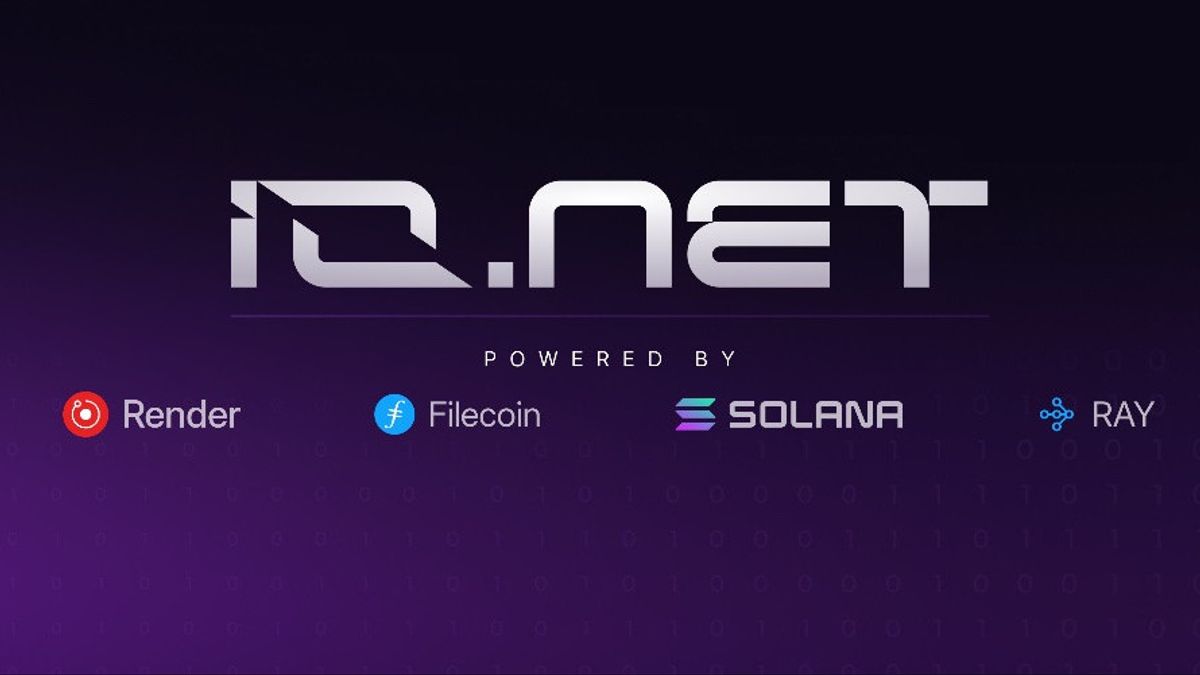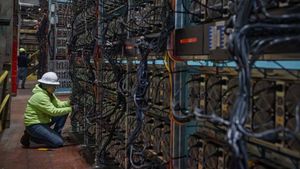JAKARTA - A project that initially started as an institutional-grade quantitative trading system for crypto and stocks has evolved into a decentralized network that provides GPU computing power to meet the growing demand for artificial intelligence (AI) and machine learning (ML) services.
Io.net has developed a test network that obtains GPU computing power from various data centers, crypto miners, and decentralized storage providers. Combining GPU computing power is said to drastically reduce the cost of renting these resources, which are increasingly expensive as AI and ML advance.
Speaking exclusively to Cointelegraph, CEO and co-founder Ahmad Shadid discussed the details of the network that aims to provide a decentralized platform for renting computing power at only a fraction of the cost of centralized alternatives that currently exist.
Shadid explains how this project emerged in late 2022 during the Solana hackathon. Io.net is developing a quantitative trading platform that relies on GPU computing power for its high-frequency operations, but is constrained by the high cost of renting GPU computing capacity.
The project team lays out the challenges of renting high-performance GPU hardware in its main document, with the rental price for one Nvidia A100 averaging around USD 80 (IDR 1.2 million) per day per card. It would take more than 50 of these cards to operate 25 days a month, which would cost more than 100,000 US dollars (IDR 1.5 billion).
SEE ALSO:
The solution was found through the discovery of Ray.io, an opensource library used by OpenAI to distribute ChatGPT training to more than 300,000 CPUs and GPUs. This library simplified the project infrastructure, with the backend infrastructure developed within two months.
Shadid showcased a working testnet of Io.net at the AI-focused Ray Summit in September 2023, highlighting how the project combines computing power provided to consumer GPUs as a cluster to meet specific AI or ML use cases.
This decentralized network will use the Solana blockchain to provide payments in SOL and USD Coin to machine learning engineers and miners who rent or provide computing power.
"When machine learning engineers pay for their clusters, these funds will be directed directly to the miners who provide GPU computing power into their clusters, with a small network fee allocated to the Io.net protocol," Shadid said.
The project plans include the launch of a dual token system that will feature both IO and IOSD. This token model will incentivize miners to execute machine learning workloads and maintain network uptime while considering the cost of electricity consumption.
"IO coins will trade freely on crypto markets and serve as a gateway to access computing power, while IOSD tokens will serve as algorithmically tied stable credit tokens with a value of 1 USD."
Shadid told Cointelegraph that Io.net is fundamentally different from centralized cloud services like Amazon Web Services (AWS).
"In an analogy, they are United Airlines and we are Kayak; they own the planes, while we help people book flights," Shadid said.
The founder added that businesses that need AI computing typically use third-party providers because they don't have the GPUs to manage it internally. With demand for GPUs expected to increase 10-fold every 18 months, Hadid said that available capacity is often insufficient to meet demand, resulting in long wait times and high prices.
This is compounded by what he calls inefficient use of data centers that are not optimized for the type of AI and machine learning work that is rapidly evolving.
"Just in the United States alone there are thousands of independent data centers with an average usage rate of 12%-18%. As a result, a bottleneck is created, which has an impact on increasing GPU computing prices."
The advantage is that the average crypto miner will earn more by renting out their hardware to compete with services like AWS. Hadid said that the average miner using a 40GB Nvidia A100 would earn $0.52 per day, while AWS sells the same card for AI computing for $59.78 per day.
"Part of Io.net's value proposition is, first, we enable participants to be exposed to the AI computing market and resell their GPUs, and for machine learning engineers, we are much cheaper than AWS," he added.
Data shared with Cointelegraph estimates that miners with GPU resources at their disposal can earn 1,500% more than they would from mining various cryptocurrencies.
The English, Chinese, Japanese, Arabic, and French versions are automatically generated by the AI. So there may still be inaccuracies in translating, please always see Indonesian as our main language. (system supported by DigitalSiber.id)
















